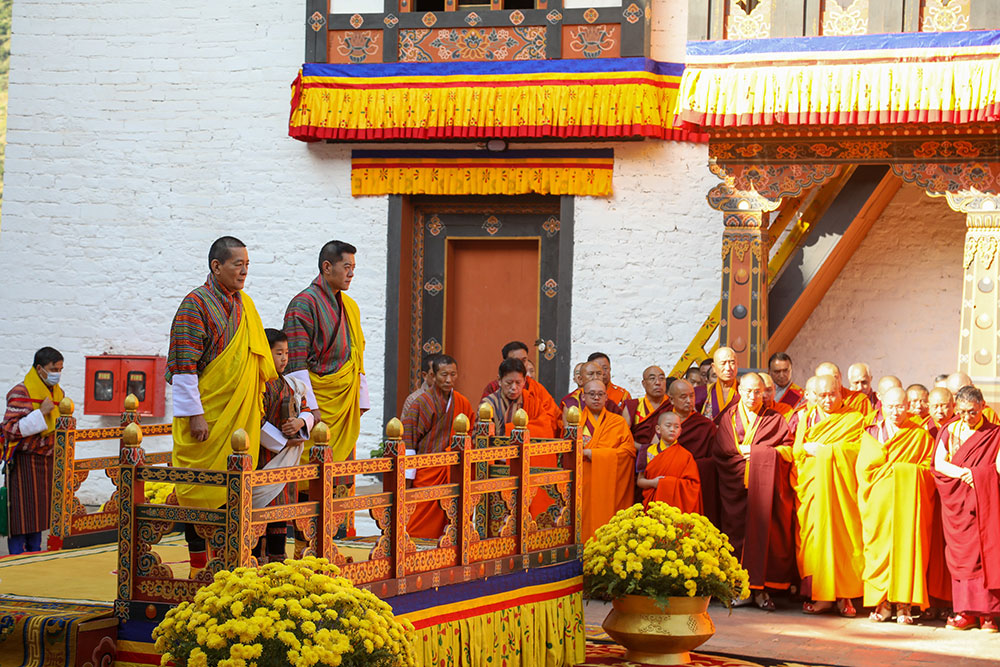Ten years after a fire razed it to the ground, the Wangduephodrang Dzong once again adorns the fabled hill resembling the trunk of a sleeping elephant.
The historic Wangduephodrang Dzong, rebuilt to its former glory upon Royal Command, was consecrated today on the auspicious occasion of November 11.
His Majesty The King, His Majesty the Fourth Druk Gyalpo, Her Majesty The Gyaltsuen, Their Royal Highnesses Gyalsey Jigme Namgyel and Gyalsey Ugyen Wangchuck, and Members of the Royal Family graced the Tashi Rabney (consecration) of the dzong. His Holiness the Je Khenpo presided over the ceremony and the prayers, which began on November 9.
Tashi Ngasoel prayers were performed, and Mendel Ku, Sung, Thukten Thinley offered to His Majesty The King, His Majesty the Fourth Druk Gyalpo, and the Je Khenpo by representatives of the dzongkhag at the Zhabdrung Tong-ku Lhakhang of the dzong.
The Prime Minister, Ministers, and the Ambassador of India to Bhutan and relevant government officials attended the ceremony, along with the people of Wangduephodrang dzongkhag.

Wangduephodrang Dzong, built in 1638 by Zhabdrung Ngawang Namgyel, is of great historical importance to Bhutan as an administrative centre that connected the east and west, besides being an architectural and cultural landmark.
A fire on 24 June 2012 destroyed not only the magnificent building, but also the many precious statues and relics housed within. However, many other relics were retrieved due to the valiant efforts by the armed forces, de-suups and volunteers.
His Majesty The King Commanded that the dzong be rebuilt to its former stature, with state-of-the-art technology for disaster resilience, and granted Nu 200 million to commence work. Reconstruction work based on the new design began in 2014.
The new structure was built upon the footprints of the old, using traditional materials and techniques, by local artisans. Pioneering integration of modern and traditional design and technology include use of bearings in the foundation of the Utse, galvanised steel latches connecting floors to walls, and more resilient building materials. A Service Tunnel in the center spine of the dzong enables all service related pipes and lines to be transported safely with easy maintenance and as a safe exit during emergencies.
The dzong houses both the salvaged relics as well as new commissions, which was funded in large part by the offerings made by the people after the fire.
The government of India granted Nu 1 billion for the reconstruction of the dzong as part of Project Tied Assistance (PTA) grant during 11th and 12th Five Year Plans.
His Majesty thanked the people who had worked on the reconstruction project for over 8 years to successfully complete the dzong, and to the government of India for its support.
His Royal Highness Gyalsey Jigme Namgyel planted a Cypress Tree at the entrance, to bring auspiciousness to the new dzong.


